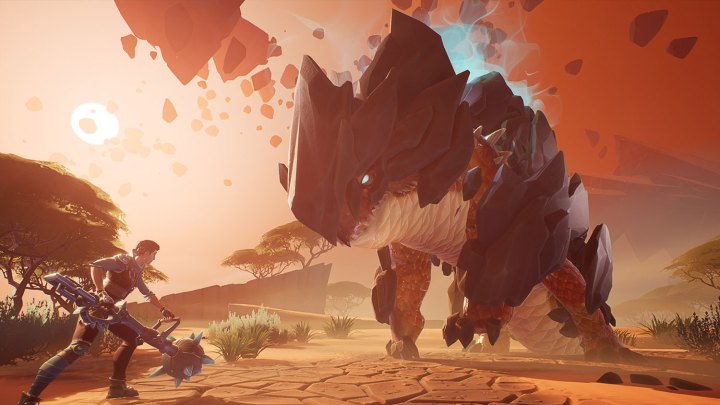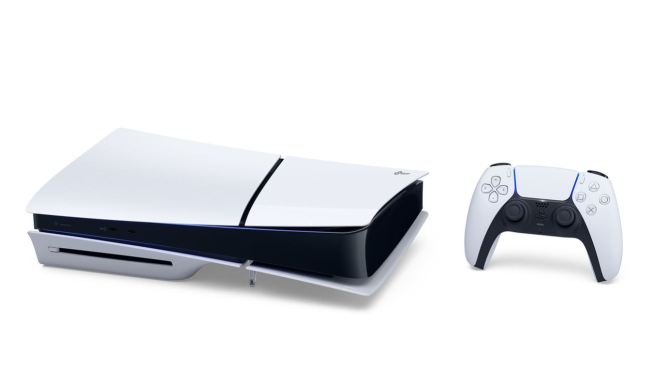The Monster Hunter franchise has been around since the PS2 era, but it wasn’t until it landed on the PSP that I first gave it a shot. I hated it. After wrestling with the camera and the console’s lack of a second analog stick, I got slammed hard by a Genprey (not a Gendrome), raged at the animation locks, and quickly decided gathering was going to be too much of a time sink. Then, when Monster Hunter Tri landed on the Wii in 2009 and I had a chance to try out the game’s co-op content, I was hooked.
Over the years, the games would gain momentum on 3DS and Wii U, but its appeal was drastically limited on the two platforms in the west. Difficult action games like Dark Souls and The Surge groomed the other side into challenge-seeking fiends — the type that would enjoy Monster Hunter’s gigantic boss battles.
But that same western audience wouldn’t care for its traditional RPG elements: The grind of crafting and gathering the means to defeat its growing cast of more difficult monsters. Phoenix Labs looked to capitalize on that market gap with Dauntless, a free-to-play Monster Hunter-inspired action-RPG with grand plans to land on every platform other than your fridge. Despite intercepting with Monster Hunter World, Dauntless performed well on release.
But where we once saw a sink or swim situation, the two are managing to co-exist because of some choice monetization differences. They largely target the same audience and share many core ideas. But with one being completely free and the other being graphically gorgeous, choosing which to play on a whim can be a challenge. Here’s how the two compare:
Monster Hunter World vs Dauntless – What’s the difference?
For one thing, Dauntless is a free-to-play game whereas Monster Hunter World (and its Iceborne expansion) costs real-world cash — but they’re two sides of the same coin when it boils down to gameplay. The former is very much inspired by past entries of the latter, but it’s worth noting that Capcom’s newest offering is quite different from its predecessors, too.
Both titles are action-RPGs all about fighting massive monsters in large arenas. Rather than slicing through hundreds of trivial creatures to reach a boss battle at the end of a level, these two games make lengthy boss battles the bread and butter of the whole show.
You select your preferred weapon type and head into a closed environment to spend anywhere from 10 to 50 minutes chopping away at one very persistent creature, then carve its hide, use the spoils to craft new weapons and armor, and move onto the next.
Fights in both games are as much about strategy as they are about endurance. You can’t just throw yourself at a beast 10x your size and expect to win by spamming the attack button. Patience is a necessity. Like a game of poker or martial arts, knowing how to identify and predict your opponent’s next move is key to claiming the advantage. See how it moves, dodge accordingly, and use that opening to cut it down without losing your arm in the process.
Weapons
Dauntless

Dauntless certainly doesn’t have as many weapon types as its competitor, but it also hasn’t built up a repertoire over 15 years of sequels. Give it time.
Right now, Dauntless features seven weapon types. These can hurt monsters in more ways than one depending on their sub-damage type (blunt, slashing, pierce); that means some are good for opening wounds, whereas others can smash monster armor apart.
The currently available types are as follows:
- Axe
- Aether Strikers (fists)
- Chain Blades
- Hammer
- Ostian Repeaters (dual pistols)
- Sword
- War Pike
All of these sans the Aether Strikers were available at launch back in 2018, with the other being added as recently as September 2019. There’s no word on an eighth weapon type just yet, but if it can happen once, it can happen again.
Most of these weapons sound self-explanatory. After all, how complicated can one game’s axe be over another? In reality, Dauntless has a lot of flair when it comes to its weapon types. For one, the hammer is also part gun, allowing its user to stay on the offensive even from afar.
Monster Hunter World

Monster Hunter World didn’t bring any new weapons to the franchise, but it didn’t cull any, either. Every weapon type released over its long history is here, making for a whopping 14 different ways to fight off giant monsters.
We don’t anticipate another weapon being added to Monster Hunter World. A sequel is most definitely in the works, though, so expect to see something then (unless Hunter Arts from Monster Hunter Generations are added instead).
The following weapons types are available in Monster Hunter World
- Great Sword
- Long Sword
- Dual Blades
- Bow
- Bowgun
- Heavy Bowgun
- Lance
- Gunlance
- Charge Blade
- Switch Axe
- Hunting Horn
- Hammer
- Insect Glaive
- Sword & Shield
Monsters
Dauntless

Dauntless likes to be a little different. Rather than referring to its big bads as “monsters,” they’re known collectively as Behemoths — similar to how you’re a Slayer rather than a Hunter.
The main reason for cutting them down is that they sap the Shattered Isles of aether to survive, and by killing them, said aether returns to the land, ensuring regular fauna and flora can exist in harmony. You’re like battle-hardened environmentalists.
Dauntless features close to two dozen different monsters at the time of writing, with each falling into an elemental sub-category. Many are heavily inspired by real-world animals, so expect to be fighting off dangerously large owls, boars, and beetles on top of demons and dinosaurs. As you explore the more of its world, you’ll come across altered versions of familiar species, creating a little more bang for your imaginary F2P buck.
Monster Hunter World

Over in Astera, monsters new and old thrive in what’s known as “The New World.” While nobody would say they play Monster Hunter for the story, World is a full-blown sequel, with many of its characters referencing the lives they had before boarding the expedition to the continent featured in the game. They’re familiar with monsters returning from past games, while excited at the prospect of taking on beasts found only in this new locale.
Monster Hunter World, as of its Iceborne expansion, includes well over 40 unique monsters to take on, with sub-species and “Tempered” versions arguably amounting to even more.
While that may seem like a lot, it’s still around a third less than the previous game in the series. Capcom still has plenty of monsters left to pull from its back catalog to quickly grow Monster Hunter World in the future, whereas each additional monster in Dauntless will no-doubt be created from scratch, likely creating a larger gap between high-profile releases.
Combat
Dauntless

With seven weapon types to choose from, Slayers in Dauntless have quite a few ways to take on their targets. Most weapons require users to get up close and personal, but there are a few ranged options available for those who prefer are maybe more used to shooters than action games. Each weapon plays very differently, but it ultimately boils down to understanding its combos and how to efficiently weave attacks together.
Whether you go it alone or with friends, the idea remains the same — you damage a monster until it drops. But it isn’t as clear-cut as simply wailing on your target and waiting for it to give up the ghost. On top of dealing regular damage, weapons are capable of dealing slashing, piercing, and blunt damage on top. These won’t deplete a target’s invisible HP bar like raw damage, but instead, build up to eventually break or wound a specific body part – the end result depending on the specific damage type. Bring the right elementally-attuned weapon for bonus damage, too.
Strategy comes into the equation here. Dealing the right kind of damage to a specific body part can render it unusable, not only reducing the threat of a monster’s most powerful attacks, but also sometimes causing it to drop specific loot. This creates preferred weapons for a preferred play-style. For example, if you find yourself targeting a monster’s head a lot, blunt damage can knock a monster over. If you tend to stay around back, slashing damage to the leg can open up wounds for other players to bully, or even remove things like tails and horns.
During battle, monsters can (and will) enter an Enraged state. It’s here when they’ll typically speed up their attacks, making it all the more important to read their moves and act accordingly. It becomes far harder to attack mercilessly in these states, so you’ll need to make each move count and make the most of every available window.
Dauntless also ups the ante by adding the Aether Charged state on top of this. There’s a more noticeable cosmetic difference when a monster enters its Aether Charged state: one example of this is when the Embermane gains its signature fiery fur and commonly runs away to launch fireballs from a distance.
Monster Hunter World

Monster Hunter World is a similar beast. After all, how different can you make whacking a monster to death? With more than double the weapon types, Monster Hunter World certainly has Dauntless beat when it comes to total attack combos, but both have some very unique tools to get the job done.
In Monster Hunter World, the environment is a weapon in itself. Not only can you drop a bag of boulders on your prey, but you can also climb vines, slide down slopes, and dive off cliffs and branches. It adds an element of verticality to your attacks. These can be used to mount monsters to get some free hits in, steer them toward traps and hazards, and create openings by knocking them down.
Items play a major part in the operation, too. Potions will top up lost HP, sure, but bombs, traps, and stat-boosting edibles can spice up any strategy and effectively cancel out a monster’s temper in a pinch. With enough preparation, you can even capture a monster to end a quest early by placing a trap and peppering injured prey with tranquilizers. Of course, monsters enrage here, too. Trust me, you’ll know when they do.
On top of all that, Monster Hunter World retains varying weapon types and status afflictions borrowed by Dauntless. Blunt weapons can crush body parts and knock creatures out, while sharp weapons can cut off hazardous limbs. Both weapon types work in tandem to cover weaknesses, and part of a successful strategy is knowing which part of a monster is susceptible to each weapon type and element. Status afflictions like Paralysis and Blast build up over time for devastating results, as well. It’s all in the details.
Progression and Upgrading Equipment
Dauntless

Armor and weapons are at the forefront of progression in Dauntless, but each can be imbued with “perks” that add combat modifiers when stacked. Both are crafted using materials dropped by monsters. Gear can be crafted with specific perks already included, but players can find and create Cells that can be placed into empty slots on gear to add specific perks.
On top of this, every slayer can take one of eight lanterns into battle. You can trigger a lantern’s primary ability with a tap, or hold the button of a fully charged lantern to trigger a secondary effect. These vary wildly depending on the lantern but most include a buff, like a shield or attack rate increase, or a new attack like a fireball or bomb.
Progression works by defeating each island’s monsters. Clear the set, and you’ll move onto the next. The Shattered Isles contains around five different hunting grounds, and you’ll visit each in sequence as you clear the goals of the last.
Once you’re through with that, Heroic fights await as the true test of your ability. Here, it’ll be less about armor and weapons seeing you through, but your ability to avoid damage completely and maximize time spent attacking. Then there’s Escalation; a brute gauntlet of battles ready to push you to the brink that’s only going to get tougher with the Blaze Escalation.
Monster Hunter World

Monster Hunter World uses a very similar system. You won’t level up and assign stat points, but instead, work to craft better weapons and gear using the materials of previously defeated monsters. Each weapon type has dozens of variants with many following a laborious upgrade tree to eventually become something almost completely different. While not absolutely necessary, having a weapon of each element will mean you’re always able to deal high damage to a target.
Armor often includes passive skills that activate under certain conditions, meaning armor sets can be mix and matched to create specific builds — like one that can send your critical rate through the roof for … sliding down a hill. Talismans can be worn and augments can be slotted into gear to strengthen skills or even add new ones.
Monsters grow more and more powerful as you increase your Hunter Rank and progress through Low, High, and Master Rank difficulties. Monster sub-species mix attack patterns up a bit, whereas Tempered and Arch-Tempered variants further scale monster damage and HP to make properly upgraded gear all the more important. And, as certain upgrade materials may only drop by breaking specific body parts, tweaking your strategy to aim for a tail, wing, or claw, can often be like fighting a new monster entirely.
When you’re not pushing ahead with story content or beating up the same monster for an armor set, side quests can unlock other useful features — like additional ingredients for stat-boosting food, or more efficient ways to farm materials needed to make the items you bring with you on the hunt.
Unless you’re playing very casually, items will run dry; and you’re only half the hunter without them. Going out to gather ingredients for potions and bombs is just as important and upgrading your armor.
Which one should you play?

When it boils down to it, Monster Hunter World and Dauntless are two very similar, yet very different, video games. Dauntless truly lends itself to the Fortnite fandom; it’s colorful for one thing, but it’s a service game at heart. It’s designed to suck you in and not let go. Thankfully, that means it shouldn’t take more than a single sitting to gauge whether or not it’s for you. And better yet, it won’t cost you a penny to figure that out.
If you’re the type who likes clear-cut goals to trendy cosmetics, there’s a Season Pass in place just like every other pseudo-MMO currently out there, so there’s always something to work towards. Not sure if you need a new weapon yet? Just smack something up and get a nice outfit. Easy.
Where Dauntless really differentiates itself over the competition is the lack of fluff between the good stuff. Rather than get bogged down prep, so long as you refill your potions, you can pick a mission and get stuck in. You won’t have to navigate the whole of the Amazon Rainforest to find your target, either. It’s a true pick up and play experience — bolstered by the ability to play on the go thanks to the Nintendo Switch. They’re still planning a full-blown mobile port, too.
And then there’s Monster Hunter World. We’re lucky Capcom finally decided to simplify the series’ more hardcore elements. After thousands of hours of the older games, I’m still always learning something new just due to how needlessly cryptic the series can be.
Capcom’s 45-million selling blockbuster is more complicated than Dauntless, but it can be relatively well understood by the time you reach the base game’s midsection.
You’ll get lost in its environments more often than not, and small and large creatures interrupting your hunts can make for a pretty aggravating time; but if you’re coming from something like Dark Souls, Nioh, or Bloodborne, you’ve already been conditioned to this kind of fighting. It takes some time to clamber your way to the top, but what awaits is a satisfying game you can dip in and out of without worry.
Monster Hunter World is for the modern action-RPG veterans and those who don’t want to be pressured into “keeping up”, whereas Dauntless is far more suited to those specifically looking for their next obsession.



